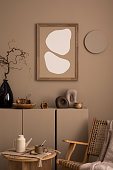Unlocking the Power of Art
페이지 정보
작성자 Margery 작성일25-07-01 09:13 조회25회 댓글0건관련링크
본문
Healing Potential of Art
Research has shown that engaging in art activities can have a profound impact on both physical and mental health. Art therapy, 現代アート a form of psychotherapy that utilizes art-making to communicate and express emotions, has been recognized as an effective way to alleviate symptoms of anxiety, depression, and post-traumatic stress disorder (PTSD). By providing individuals with a creative outlet, art therapy allows them to express and process their emotions in a healthy and constructive manner, rather than suppressing them by bottling them up.
Beyond art therapy, various forms of art - sculpting - have their own unique therapeutic benefits. For instance, drawing can be used to express emotions and create a sense of calm, while sculpting can provide a sense of tactile satisfaction and empowerment. dance, on the other hand, can stimulate emotional release and promote a sense of community and connection.
Benefits of Art in Mental Health and Wellbeing
So, what are the benefits of art in mental health and wellbeing? Some of the key benefits include:
Relaxation Techniques:
Engaging in art activities can be a great stress-reliever, allowing individuals to focus on the creative process rather than their worries and concerns about the future.
Self-Expression:
Art provides a healthy outlet for expressing and processing emotions, allowing individuals to communicate their thoughts and feelings in a non-verbal manner verbally.
Self-Esteem:
Creating art can boost self-esteem and confidence, as individuals receive recognition and validation for their creative work from others.
Being in the Moment:
Art activities require individuals to be present in the moment, promoting mindfulness and reducing worries about the past or future in some cases.
Relationships:
Engaging in art activities can provide a sense of community and connection, as individuals share their creations and connect with others who share similar interests with people.
Applications of Art in Mental Health and Wellbeing
The applications of art in mental health and wellbeing extends to various settings, including:
Medical Facilities:
Art therapy is often used in hospitals, clinics, and other healthcare settings to support patients with physical and mental health conditions such as depression.
Education:
Art classes are increasingly being incorporated into school curricula to promote creativity, self-expression, and social skills in children.
Gatherings:
Community-based art programs provide a safe space for individuals to express themselves and connect with others, often in areas where traditional mental health services are lacking in areas.
Rehabilitation Programs:
Art therapy is used in various therapeutic settings, including counseling, psychotherapy, and rehabilitation programs for growth.

Summary:
In conclusion, art plays a vital role in mental health and wellbeing, providing individuals with a creative outlet to express themselves and process their emotions. From art therapy to various forms of art, the benefits of art in mental health and wellbeing are numerous and varied and valuable. As we continue to explore the impact of art on mental health and wellbeing, it is essential to incorporate art into our daily lives, whether through creative activities, community programs, or therapeutic settings by being receptive art. By doing so, we can promote a more holistic approach to mental health and wellbeing, one that values the power of art to heal, inspire, and connect us all together.
